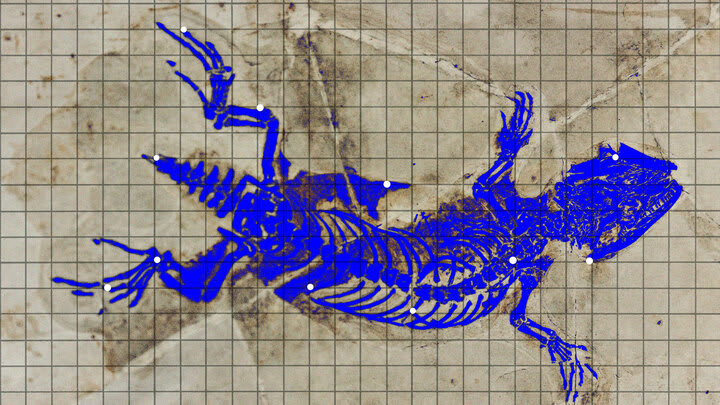Photo Illustration by Erin O’Flynn/The Daily Beast/Getty Images
A fossil considered significant in understanding the evolution of early reptiles was found to be mostly paint, according to new scientific analysis published on Thursday.
In 1931, a museum worker discovered the remnants of a lizard-like creature in the Italian Alps surrounded by a dark shading in the rock. Scientists believe that this rare shadow was carbonized soft tissue. The long-necked five-digit reptile was declared part of a new genus, tridentinosaurus antiquus and in 1959 it was announced to be part of the Protorosauria group. The fossil is estimated to be 280 million years old.
Because the fossil was discovered before much of modern technology was invented, it had never been verified using the range of modern techniques. A new study, co-authored by Valentina Rossi of University College Cork in Ireland sought to do just that. What they discovered was that while some parts of the fossil were quite real, the outline which made it unique was fake.

